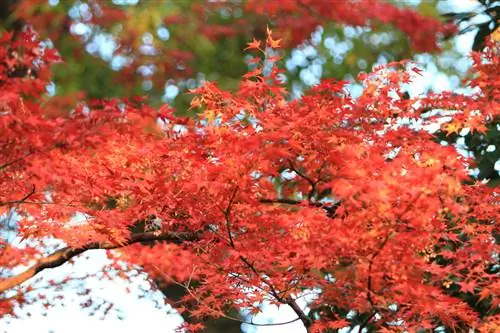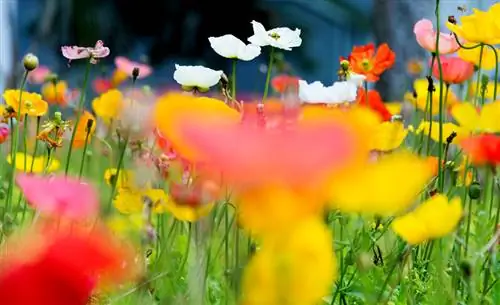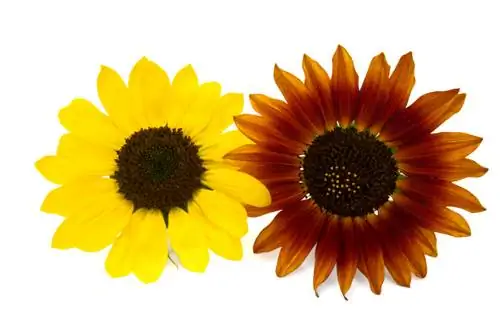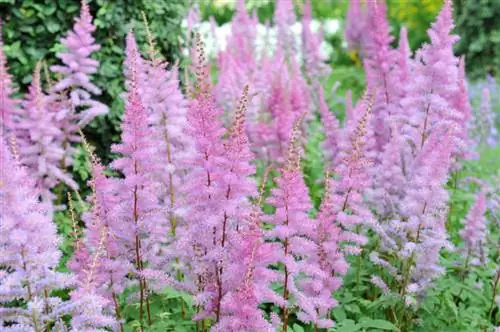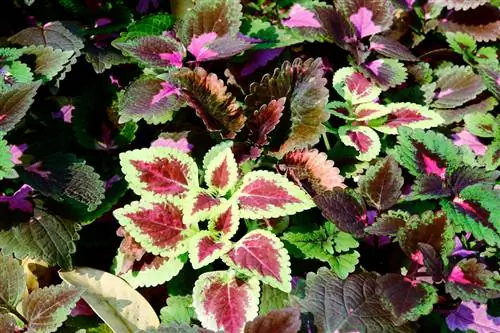- Author admin [email protected].
- Public 2023-12-16 16:46.
- Last modified 2025-01-23 11:20.
The Japanese maple has been found more and more frequently in German gardens in recent years. This is not only due to its extremely delicate foliage, which boasts an impressive array of colors in autumn, but also to its rather low growth. In this profile we will introduce you to the beautiful exotic in more detail.
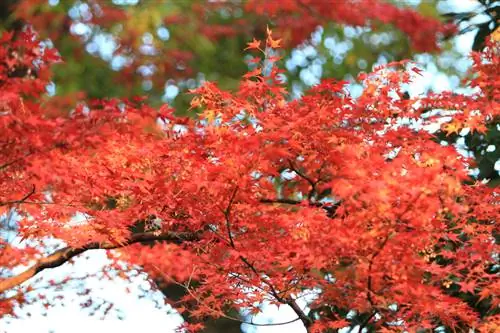
What characterizes the Japanese maple?
The Japanese maple (Acer japonicum) is a slow-growing shrub or small tree known for its impressive autumn color in various shades of red. It prefers sunny to partially shaded locations and usually reaches a height of up to 10 meters.
The Japanese maple at a glance
- Botanical name: Acer japonicum
- Genus: Maples (Acer)
- Family: Sapindaceae
- Popular names: Thunberg's Japanese maple
- Origin and distribution: Japan (especially Hokkaido and Honshu) as well as the eastern Chinese provinces of Jiangsu and Liaoning
- Location: sunny to partially shaded
- Growth habit: shrub or small tree
- Growth height: up to 10 meters, but usually significantly smaller
- Flowering and flowering period: purple flowers between April and May / May and June
- Leaves: seven to nine lobed, mostly green
- Autumn color: very intense red to orange-red
- Propagation: Cuttings
- Winter hardiness: most varieties are very hardy
- Toxicity: no
- Use: as an ornamental plant in the garden or in a pot
- Similar species: Japanese maple (Acer palmatum), golden maple (Acer shirasawanum)
Diverse Japanese Maples
The Japanese maple (Acer japonicum) originally comes from the mountain forests of the Japanese islands of Hokkaido and Honshu, where it can reach heights of up to ten meters and crown widths of between five and six meters when old. In our case, however, the rather slow-growing tree remains significantly smaller. The monkshood-leaved Japanese maple ('Aconitifolium') and the vine-leaved Japanese maple ('Vitifolium') are mainly available commercially. In addition, various species are grouped under the name “Japanese maple” or “Japan maple” that are not identical to Acer japonicum, but are very closely related. These include, above all, the Japanese maple (Acer palmatum) and the golden maple (Acer shirasawanum).
Japanese maples impress with their splendor of colors
All Japanese maples are very suitable for small gardens due to their rather slow growth and can also be cultivated in sufficiently large containers without much effort. Furthermore, the filigree leaves have an impressive autumn color, which - depending on the variety and location - can range from orange or yellow-red to bright scarlet. Some Japanese maples also show a pretty red color during spring budding, while the summer foliage is mostly fresh green.
Tip
The sunnier and more sheltered the location, the more intense the autumn color will be. However, this rule of thumb cannot be applied to all Japanese maples, as some species and varieties cannot tolerate direct and intense sunlight.

